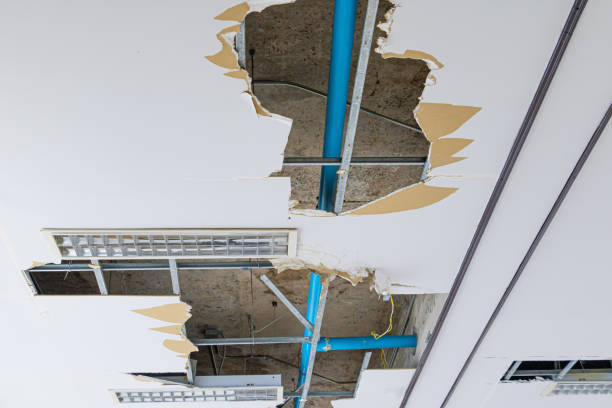Water damage emergencies can strike at any time, turning our homes into a battleground against moisture. Whether it’s a burst pipe, flooding, or a leaky roof, the aftermath of water damage demands swift and efficient action. In this comprehensive guide, we’ll explore the various factors that influence the time it takes to dry out water damage and the crucial steps involved in the emergency water damage restoration process.
Immediate Response
The initial 24 hours following water damage are critical. Swift action during this period can significantly minimize the extent of the damage and prevent secondary issues such as mold growth. Emergency water damage restoration services play a pivotal role in this stage, swiftly deploying professionals equipped with advanced equipment to extract standing water and initiate the drying process.

Assessment and Planning
Once the water extraction phase is complete, restoration experts conduct a comprehensive assessment to evaluate the extent of the damage. This involves determining the affected areas, assessing the type of water (clean, gray, or black), and categorizing the damage severity. Based on this assessment, a tailored restoration plan is devised to efficiently address the specific needs of the property.
Drying and Dehumidification
With the assessment in place, the drying and dehumidification process begins. Industrial-grade air movers and dehumidifiers are strategically placed to accelerate the evaporation of water and reduce humidity levels. This stage is crucial to prevent long-term structural damage and mold growth. Professionals continuously monitor moisture levels to ensure the effectiveness of the drying process.
Monitoring and Adjustments
As the drying process progresses, continuous monitoring is essential to track the reduction in moisture levels. Restoration experts make adjustments to the equipment placement based on real-time data, ensuring that every affected area receives thorough attention. This phase may extend beyond the initial estimate, as individual cases of water damage vary in complexity.
Cleaning and Sanitization
Once the structure is thoroughly dried, the focus shifts to cleaning and sanitization. Water damage often leaves behind contaminants, and professional restoration services utilize specialized cleaning agents to ensure a safe and hygienic environment. This step is vital for preventing health hazards and restoring the property to its pre-damage condition.
Repairs and Restoration
The final phase involves repairing and restoring the damaged areas. This may include replacing drywall, repairing flooring, and addressing any structural damage. Restoration experts work closely with homeowners to ensure that the property is not only dry and sanitized but also aesthetically restored. The timeline for this phase varies depending on the extent of the damage and the complexity of the restoration tasks.
Factors Influencing Restoration Time
Type of Water: The source of water (clean, gray, or black) significantly influences the restoration timeline, with contaminated water requiring additional precautions and thorough cleaning.
Extent of Damage: The severity of the water damage directly correlates with the time required for restoration. Extensive damage may prolong the drying and restoration phases.
Prompt Action: Quick response to water damage is crucial. The faster professionals can begin the restoration process, the shorter the overall timeline will be.
Environmental Conditions: Factors such as humidity, temperature, and ventilation impact the efficiency of the drying process. Restoration experts consider these conditions when planning and adjusting the restoration timeline.
Emergency water damage restoration is a complex and time-sensitive process that demands precision and expertise. By understanding the various phases and factors influencing the timeline, homeowners can better navigate the challenges of water damage emergencies. Timely intervention, coupled with professional restoration services, is the key to minimizing the impact of water damage and restoring a safe and habitable environment.
FAQ
How can water damage impact a home?
Water damage can lead to structural issues, mold growth, and damage to belongings. It compromises the integrity of walls, floors, and ceilings, posing health risks and requiring prompt mitigation..
What are common causes of water damage?
Common causes include leaks, burst pipes, floods, and roof damage. Poorly maintained appliances, plumbing issues, and natural disasters also contribute. Timely detection and repair are crucial to prevent extensive damage.
